Art World
From Snakes and White T-Shirts to Vinyl LPs: 6 Artists Reveal the Good Luck Charms That Keep Them Inspired
Artists tell us about the books, mementos, works of art, or other talismans they keep to get their creative juices flowing.
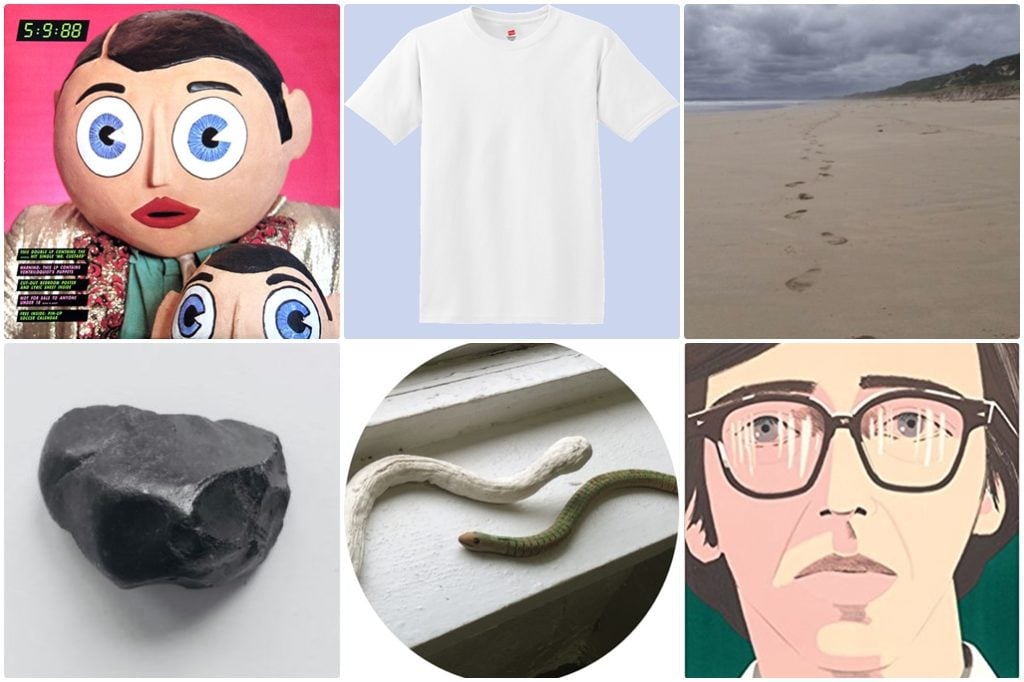
Artists tell us about the books, mementos, works of art, or other talismans they keep to get their creative juices flowing.

Margaret Carrigan

We’ve all done it—knocked on wood to ward off misfortune, clutched a rabbit’s foot for good luck before an exam, thrown spilled salt over our shoulders to get the devil off our backs. Call it superstition or just a silly tradition, we’re always looking for ways to bring some cosmic beneficence our way—or at least a little push in the right direction from the Powers That Be. And artists are no different. Since they’re always seeking that lightning bolt of divine intercession and inspiration, it makes sense that many artists cultivate small charm collections or even entire rituals to help them get in the zone while working in their studio or keep them centered before a big show. Indeed, Salvador Dalí was known to be very superstitious, always packing a piece of Spanish driftwood to keep away evil spirits when he traveled. Others were more idiosyncratic—like Pablo Picasso who reportedly never threw away old clothes or even his nail clippings lest he lose some of his “essence.”
However archaic or oddball, these habits have the same basic math behind them: More good juju and less bad vibes equals better art. So, we asked a few lucky artists working today what kind of books, mementos, works of art, or other talismans they keep in their studio or take on the road to get their creative juices flowing.
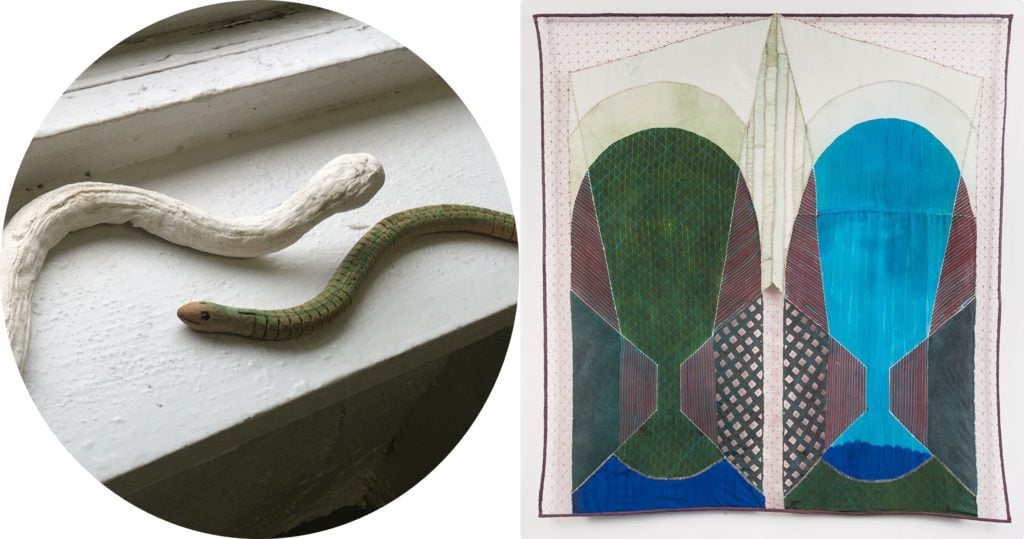
Left: Julia’s snakes in her studio. Right: Lines From Memory (2015). Courtesy of the artist.
New York–based textile artist Julia Bland says she keeps lots of lucky objects in her studio, but her favorite items are two snakes she keeps next to each other on her windowsill, given to her separately by different friends a couple of years ago. “I was thinking about snakes a lot at the time and then they started appearing in my work as well,” she says. “So the gifts were certainly prompted by that, but these figurines felt like encouragement to keep sorting through my ideas.” Snakes are a powerful symbol in various cultures the world over, often representing fertility or, more generally, a creative life force, which makes it an appropriate totem for an artist. Intertwined snakes or the ouroboros—the common image of a snake eating its own tail—represent the infinite cosmic cycle of creativity, something Bland thinks about when she looks at her own serpentine duo. “They remind me of all the mysterious ways we are connected to what’s around us.”
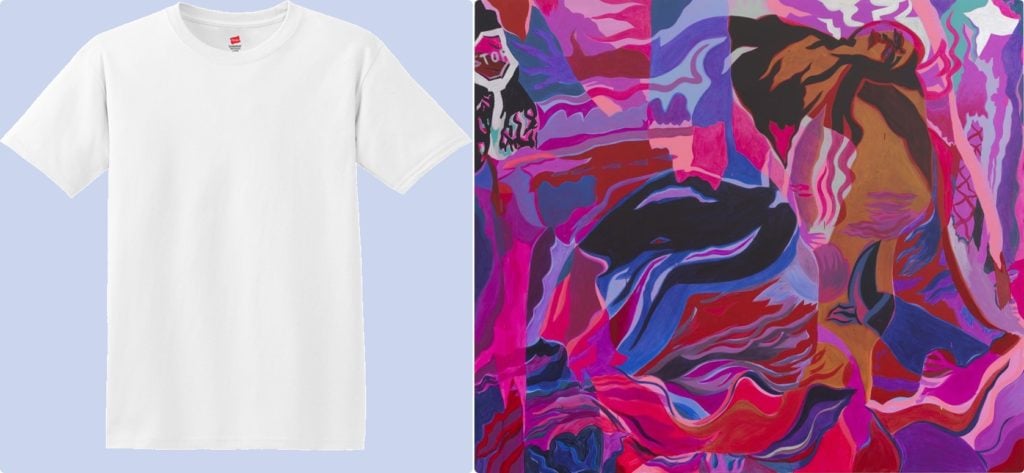
Left: The classic white t-shirt. Right: Mira Dancy’s Psychic Fallout (2016), courtesy of the artist.
Not all artists look to archetypal imagery for inspiration; sometimes the conduits for creativity are far more mundane. “I have a particular Hanes white tee that I always pack when I travel,” says Brooklyn-based painter Mira Dancy. “It’s nothing special, but I think I was wearing it in Los Angeles when I did my first wall painting at Night Gallery in 2015 and I’ve been wearing it to do wall paintings ever since.” It’s not what she paints in but also what she paints with, that makes a difference for Dancy when she’s creating a mural. After visiting Mexico City a few years ago, she picked up some brushes that she paints with when she goes on the road. These tools not only take her back to her personal experience in a highly creative locale but also helps her channel another inspiration, Frida Kahlo, one of her artistic idols. “I say my prayers to Frida before I get on the ladder,” she says.
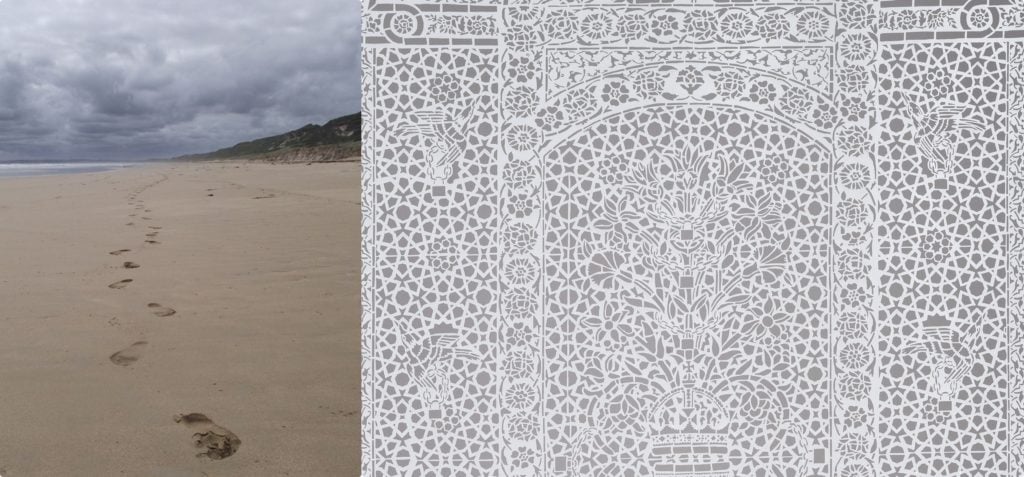
Right: Detail of Afruz Amighi’s Hanging (2011). © Afruz Amighi.
“I’m pretty much overwhelmed by talismans, hanging every which way, from every religion—just in case,” Afruz Amighi says of her New York home and studio. The sculptor, known for her chain metal architectural constructions, also makes amulet emergency packs for her loved ones before they travel, most recently fashioning a pendant out of old Pahlavi silver coins and a piece of agate her father brought back from Tehran for a friend’s long journey. When she travels, however, Amighi leaves her magical wares behind and sticks to one simple ritual: right before she’s called upon to present or speak about her work, she slips her shoes off and walks barefoot. “It grounds me,” she says. “Once I left a lecture hall shoeless and only one of my shoes was eventually recovered. It was worth it.”
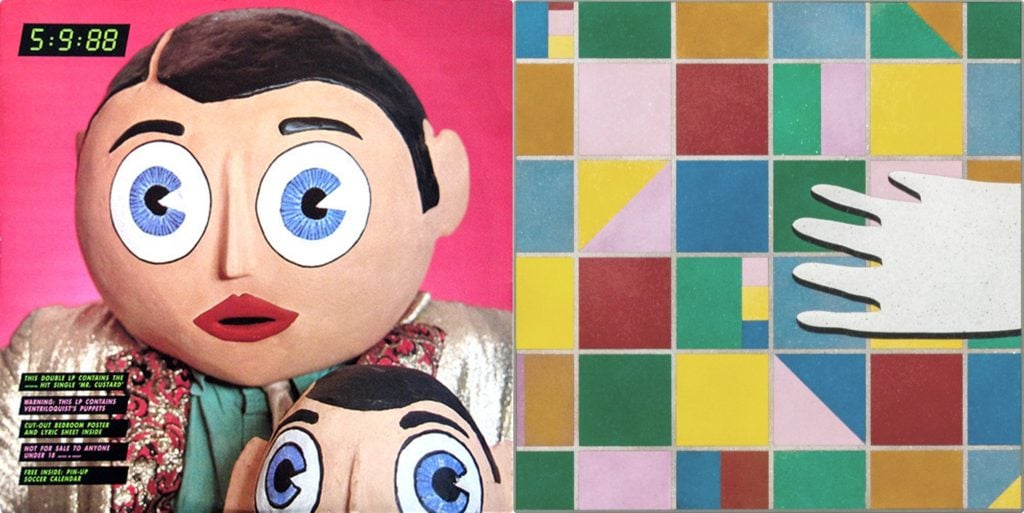
Left: Frank Sidebottom LP, Right: Rhys Coren’s Situational Melody (2016). Courtesy of the artist.
Rhys Coren, whose cartoon-inspired practice spans painting, animation, and performance, has kept a Frank Sidebottom record on his desk or tacked to the wall in his London studio for over a decade ever since his friend, fellow artist Timothy Ryan, gifted him the album. Sidebottom was a comic persona created by Chris Sievey, the English musician and comedian known for fronting the band The Freshies in the 1970s before he donned his now iconic papier mache mask that defined his 1980s alter ego. His wacky, multifaceted genius remains a creative inspiration for Coren. “Sievey was so many things: a musician, TV and radio host, animator, artist, comic book illustrator,” he explains. Seeing Sidebottom’s face in his studio day in and day out reminds the artist that he “can always do more.”
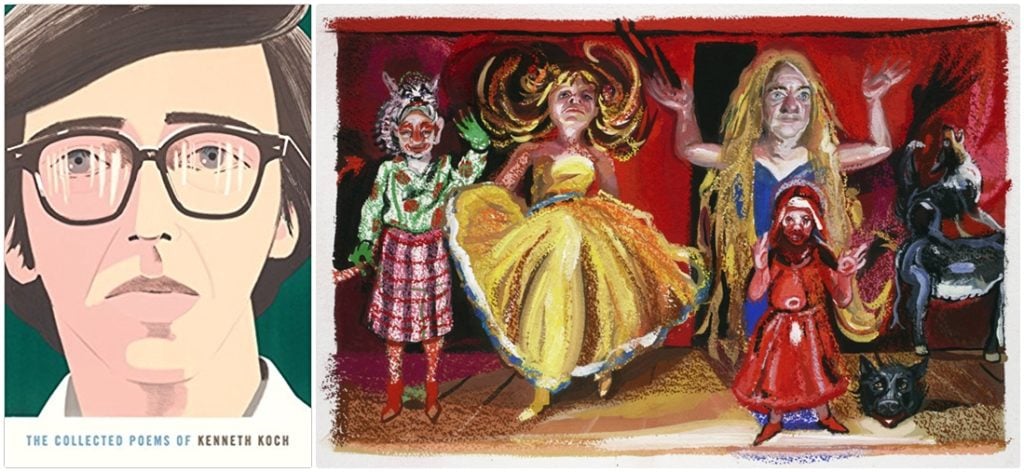
Left: The Collected Poems of Kenneth Koch (20017), Right: Natalie Frank’s Heroines (2014). Courtesy of the artist.
It comes as no surprise that Natalie Frank, who often paints lush and grotesquely expressionistic scenes drawn from fairy tales and literature, finds inspiration and refuge in the written word. She keeps a book of poetry by Kenneth Koch at her drawing desk in her Bushwick Studio. “I got the book when I was in college—I can’t even remember where I picked it up—but I fell in love immediately,” she says. Koch’s surreal and satirical writing style that reflects on everything from travel to painting and music, is what fuels Frank when she’s creating her own work. “I read from it every week, sometimes just a few lines. He reminds me of the value of play.”
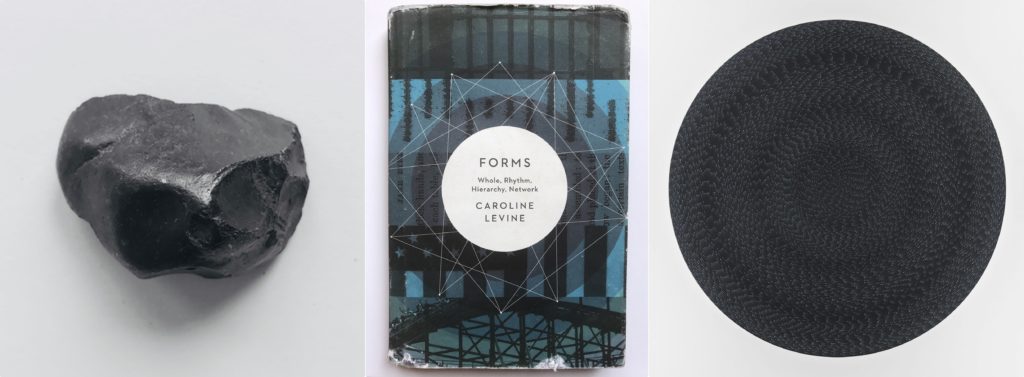
From left: Grabner’s obsidian, her weathered copy of Caroline Levine’s Forms. Right: Michelle Grabner’s Untitled (2014). Courtesy of the artist and James Cohan Gallery.
Known for her conceptual Post-Minimalist work that blends together painting and craft-based practices like weaving, Chicago-based artist Michelle Grabner says she has been carrying a number of what she calls “comfort items” when she travels, which include a pair of lucky socks, school photos of her kids, and a small obsidian. An inky black volcanic stone, obsidian is used in crystal healing practices for protection from negative energies while also alleviating stress and tension. For the last three years, Grabner also never leaves home without packing her bag with Caroline Levine’s book, Forms: Wholes, Rhythm, Hierarchy, Networks. “As wacky as it sounds, I realize that my escalating need for an ever-increasing sundry of odd accouterments has nothing to do with superstition but everything to do with a need for consistency, pattern, and routine in a disorderly world,” Grabner explains. “It is likely all a symptom of situational anxiety as I walk out the door in the morning.”